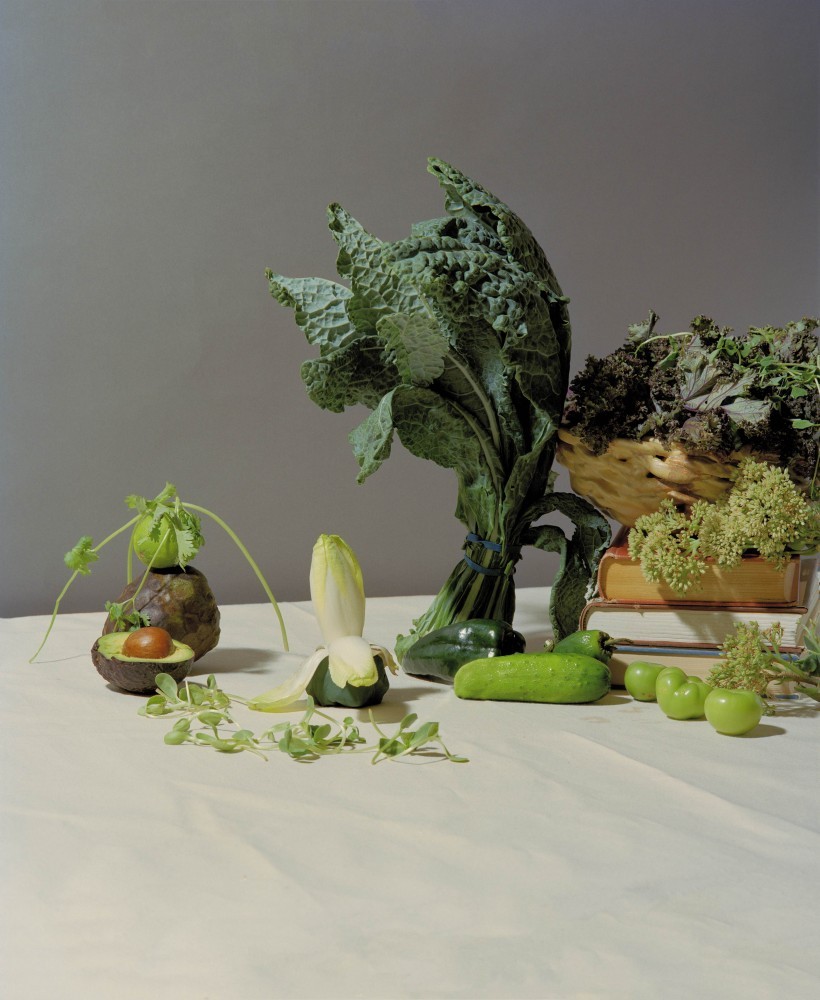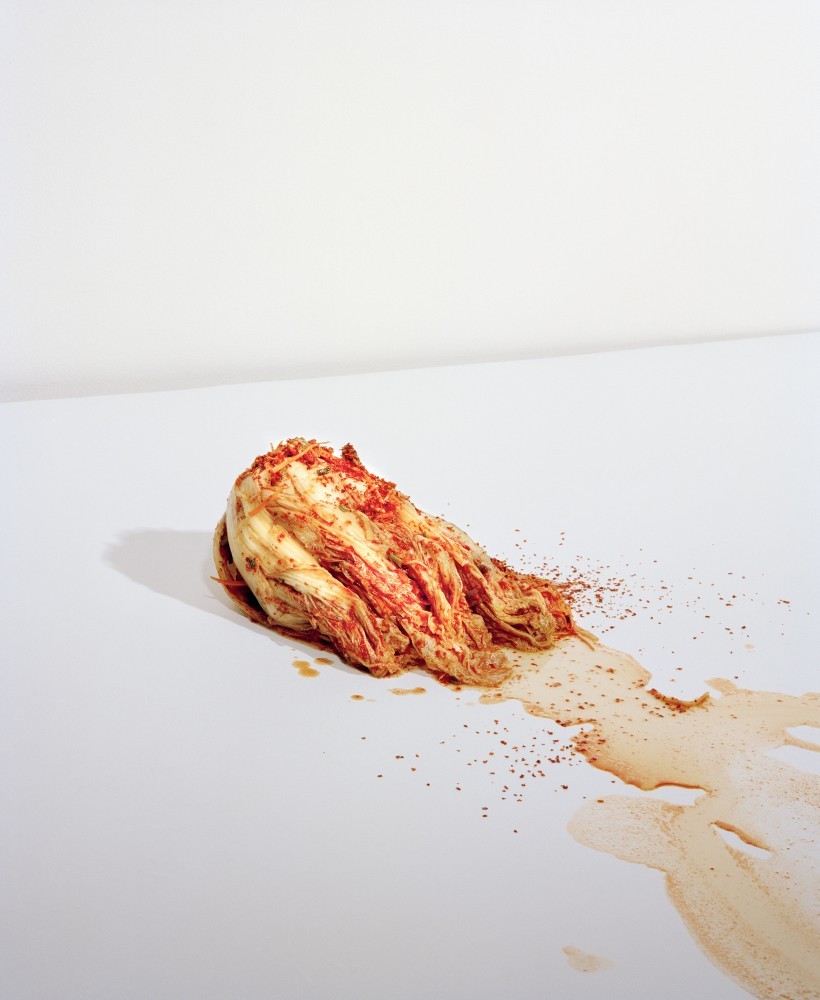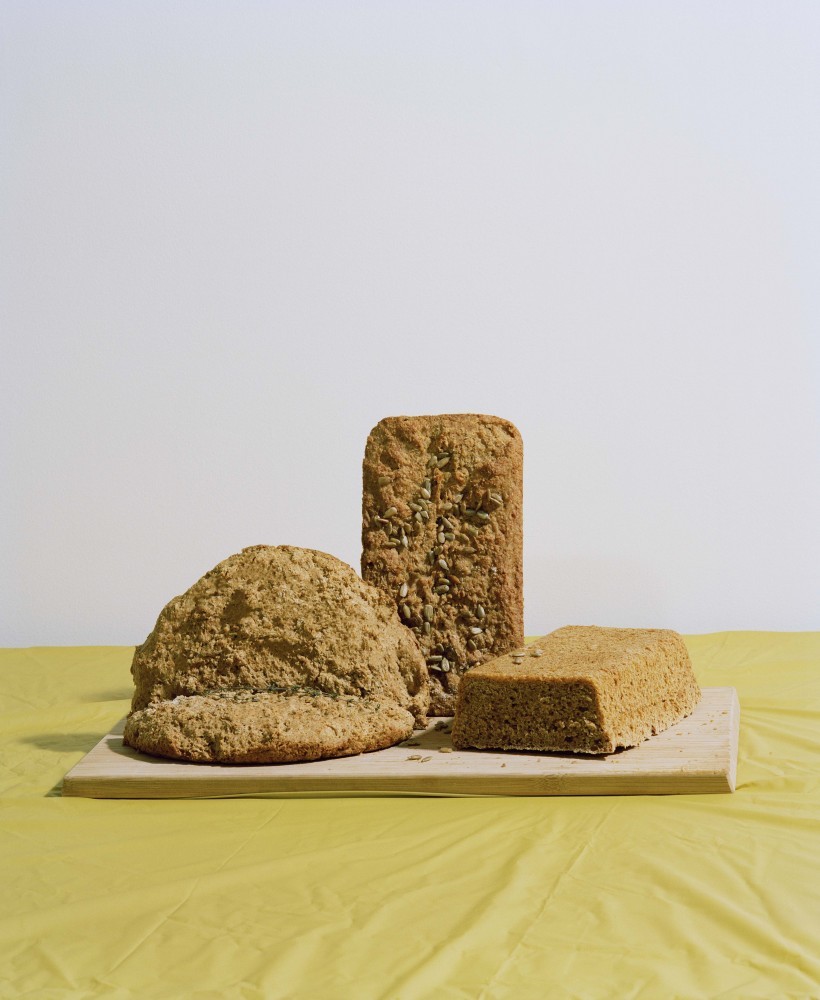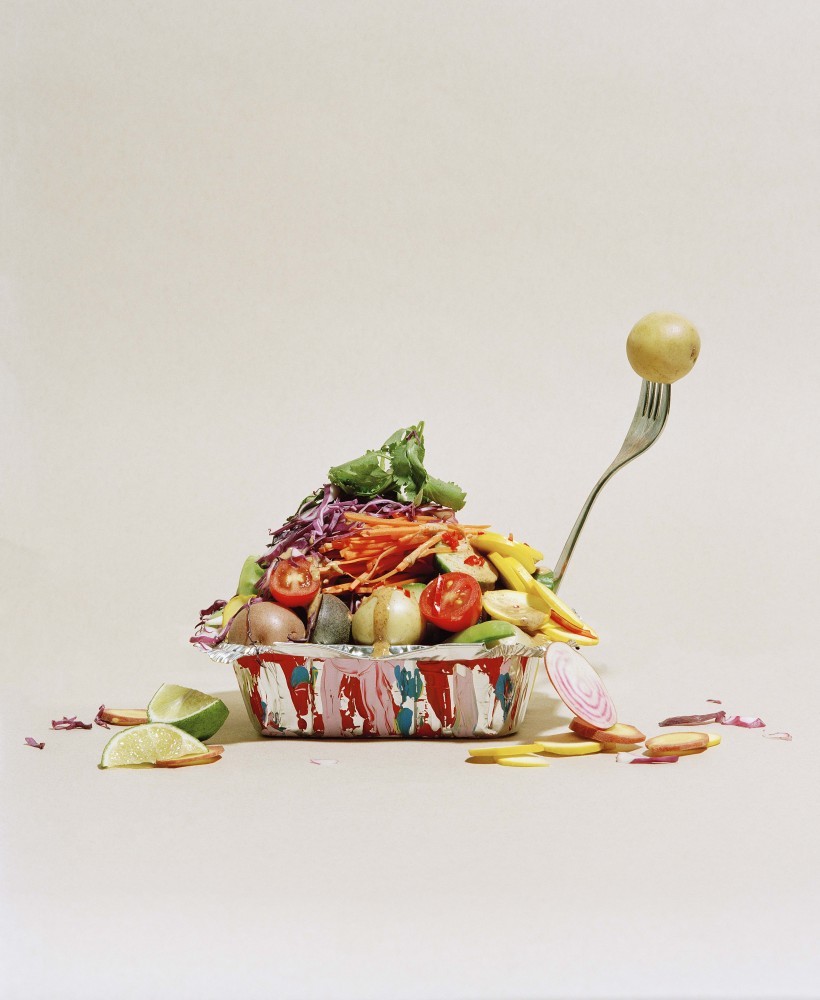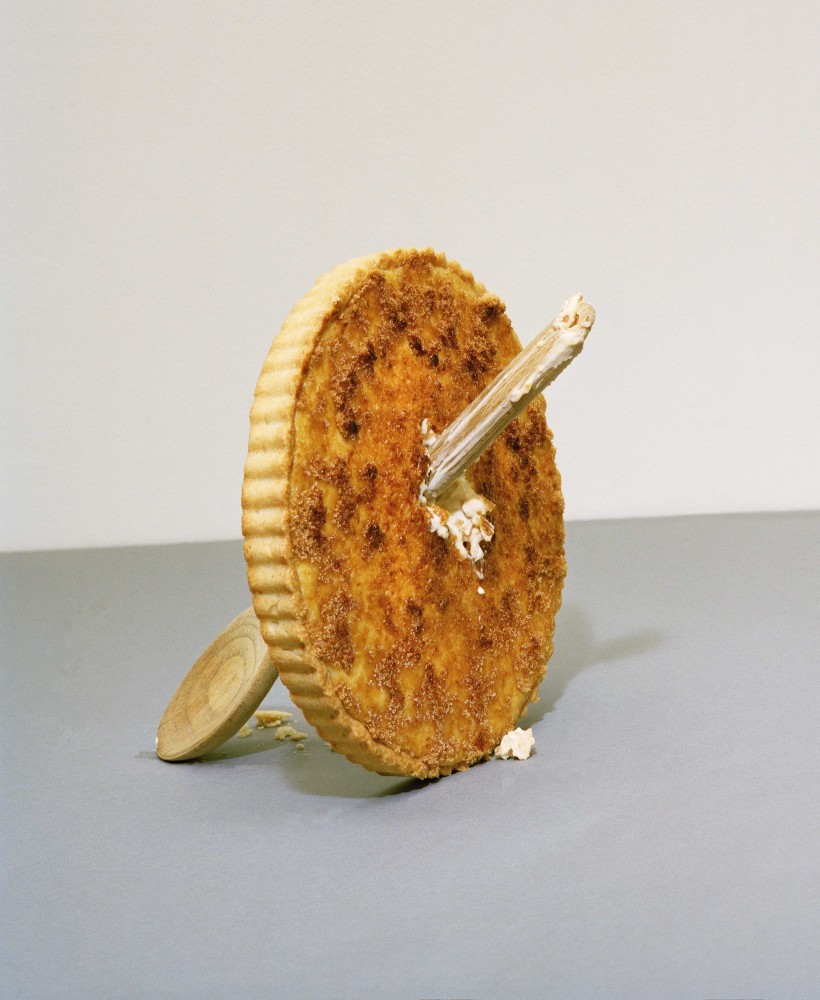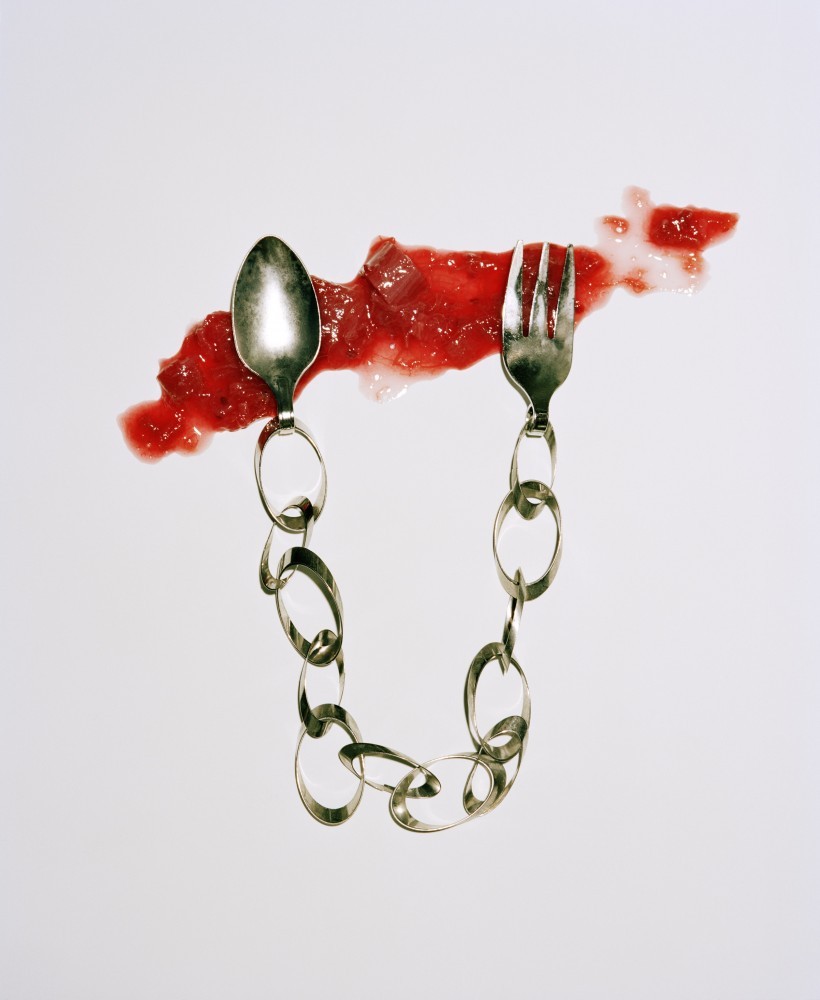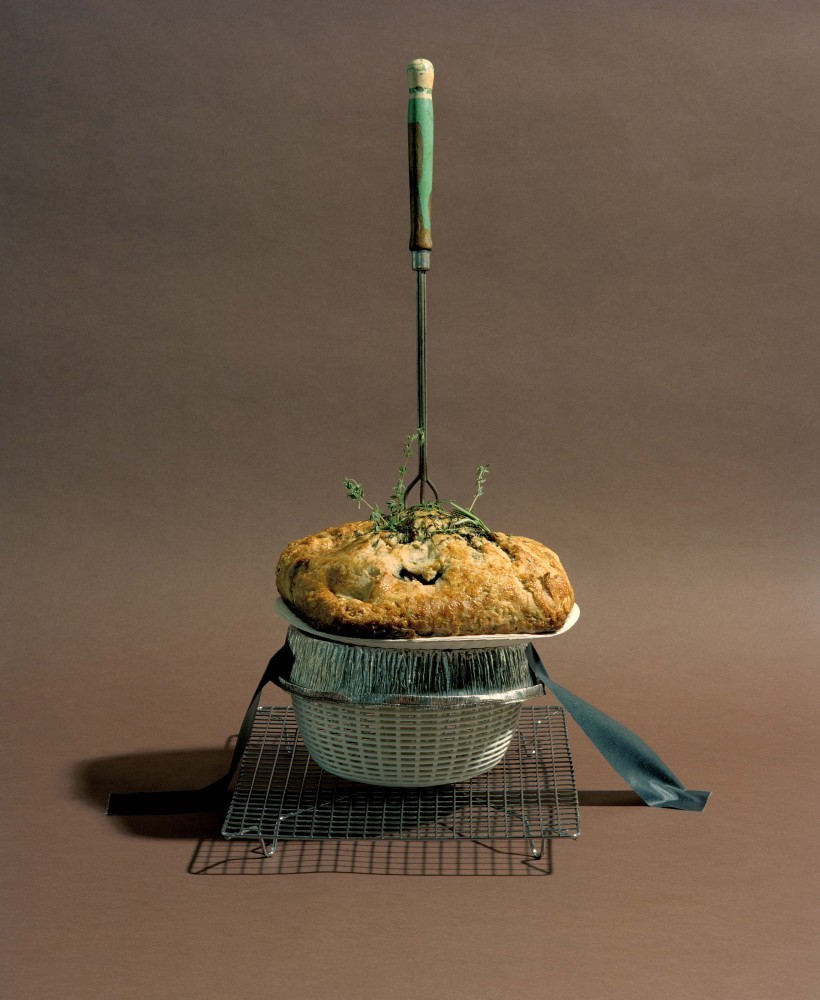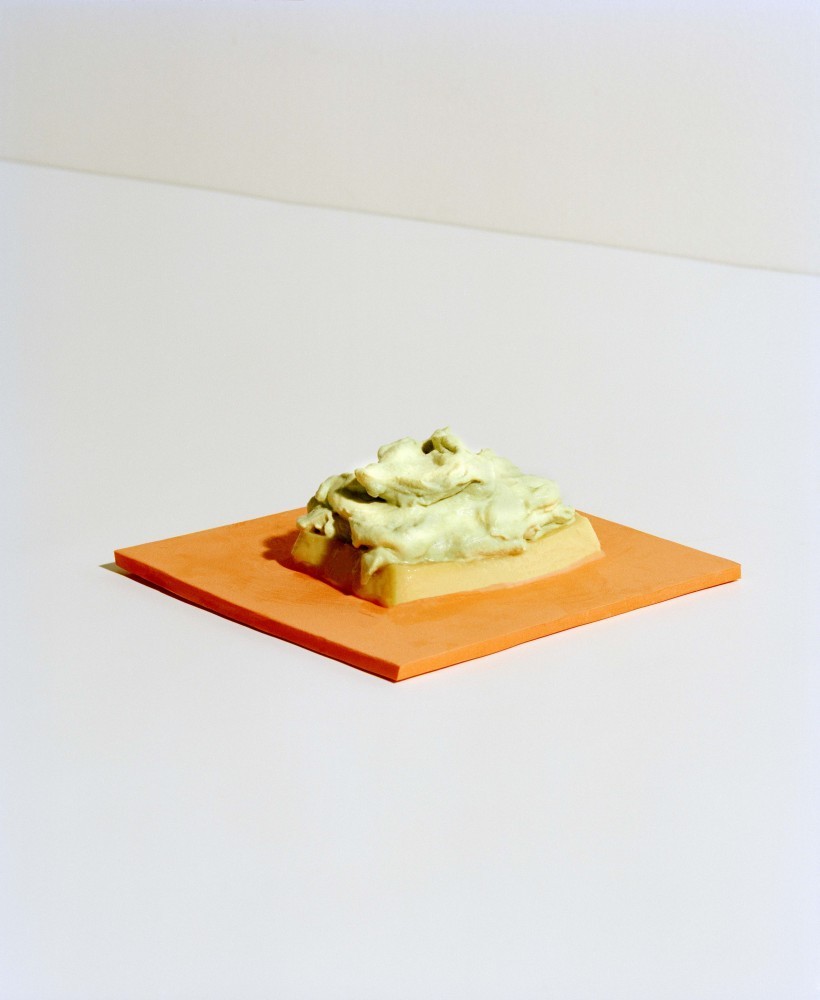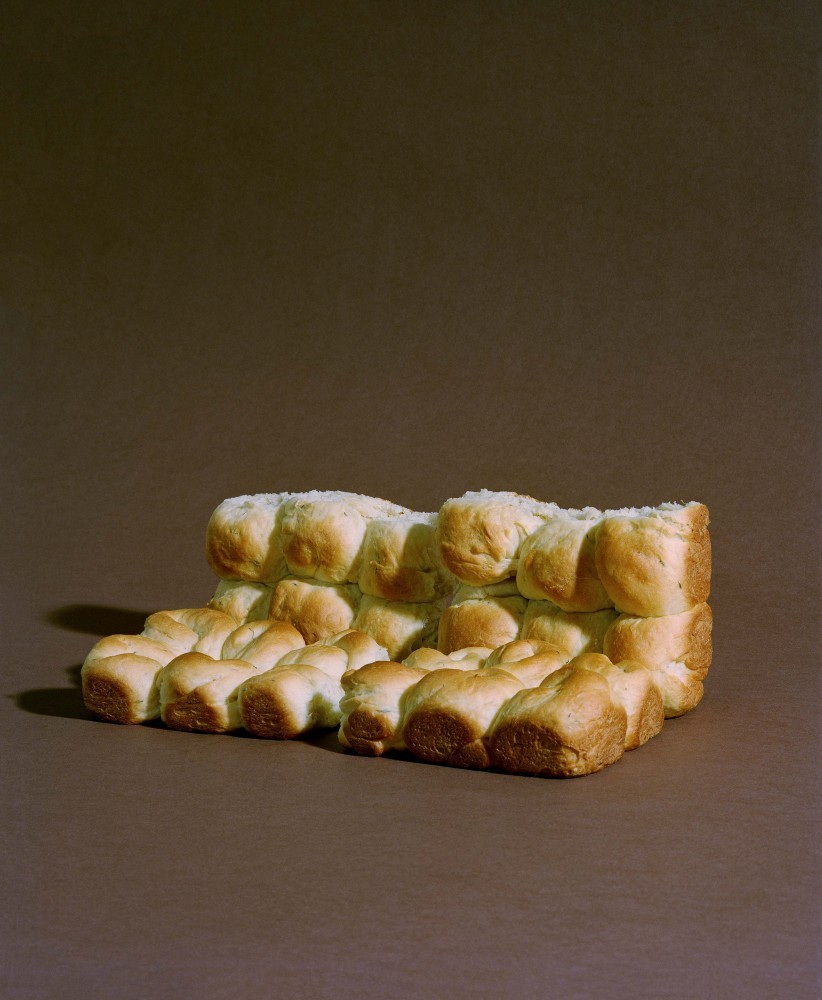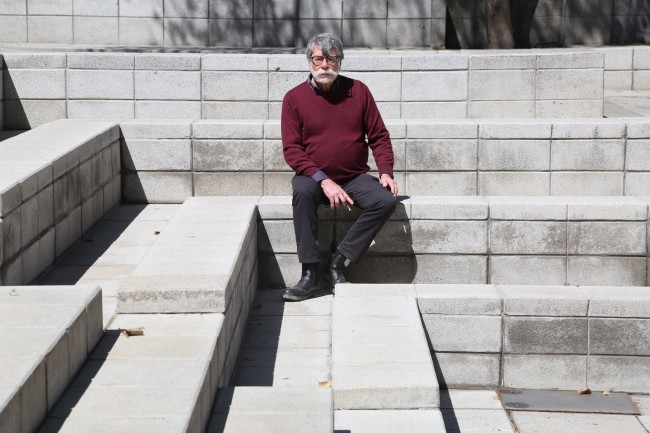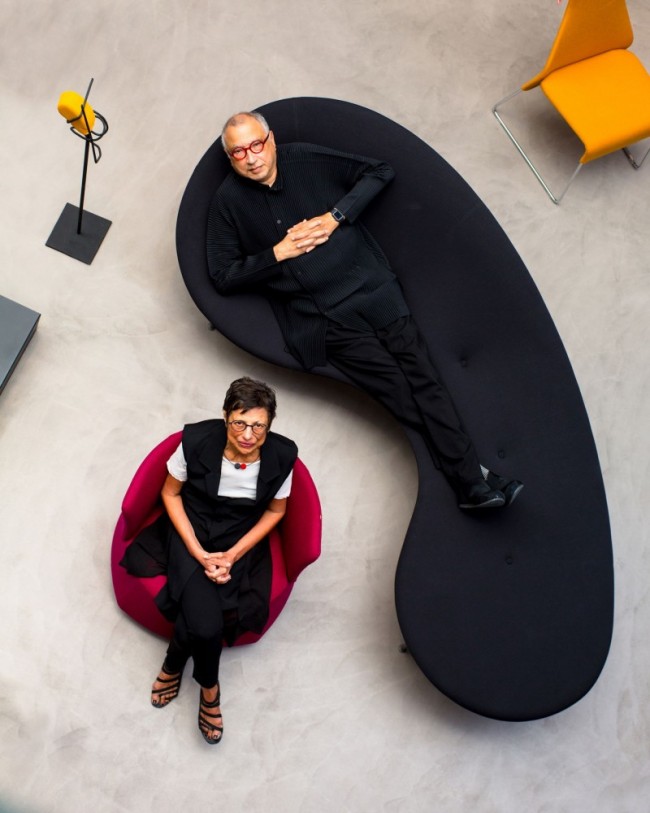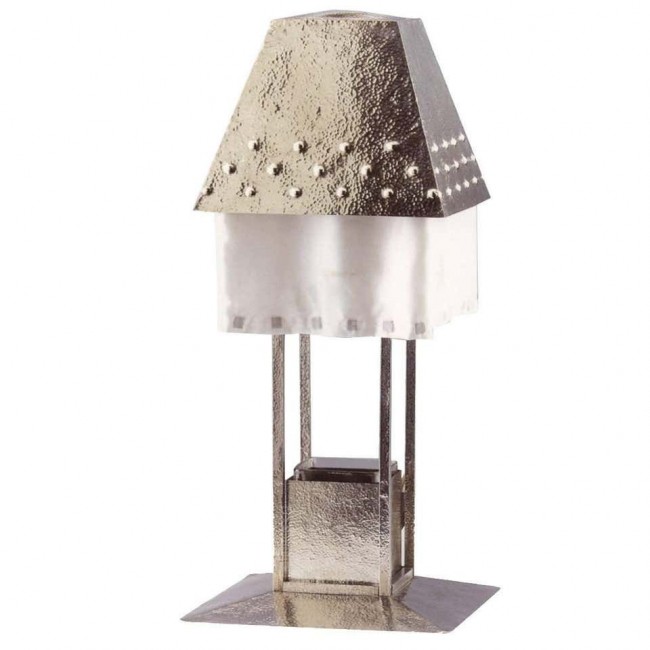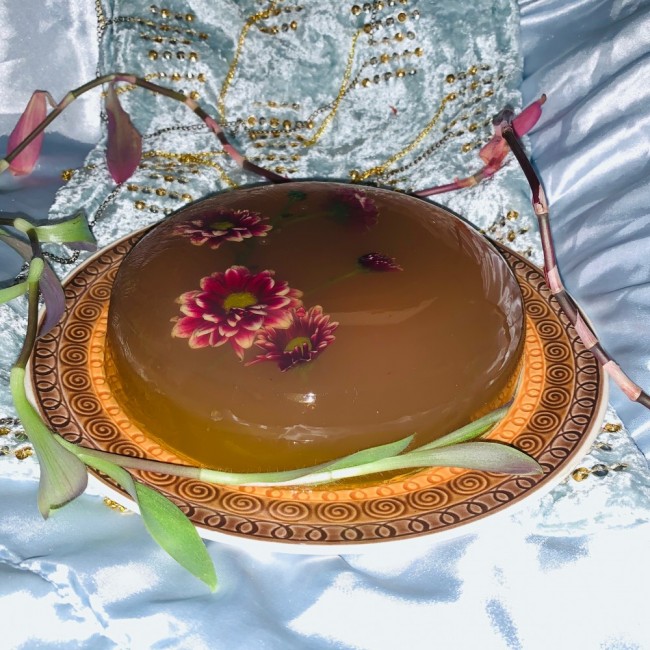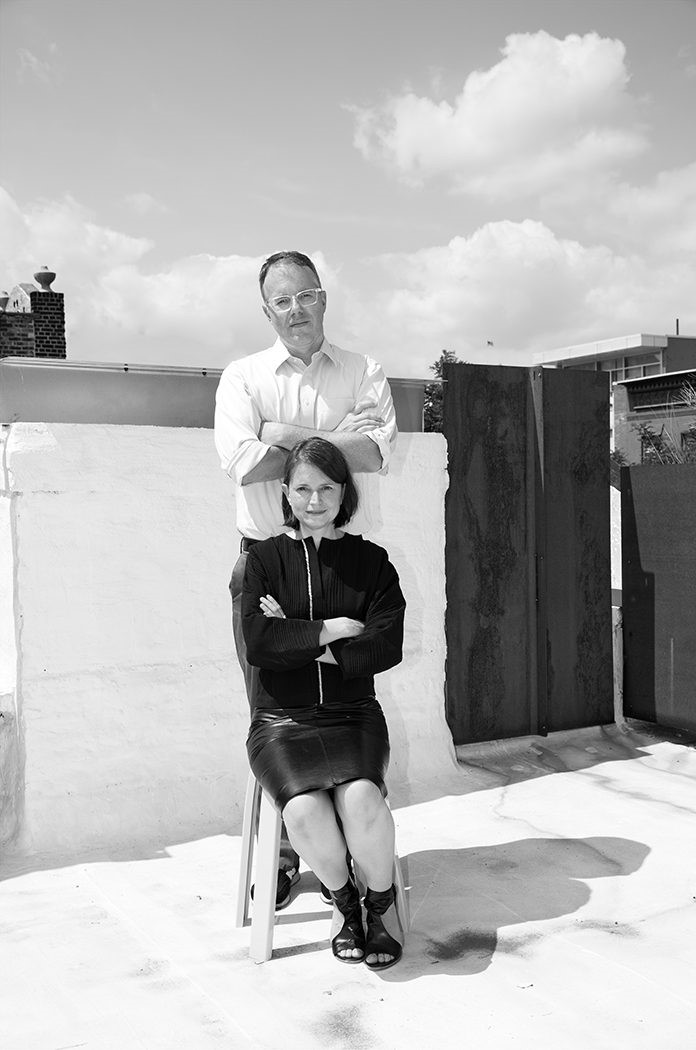Meet Esther Choi, Artist and Author of Subversive Cookbook “Le Corbuffet”
Quiche Haring. Rosalind Sauerkrauss. Superstewdio. Denise Scott Brownies. These are just a few of the dishes in artist Esther Choi’s delightfully deconstructivist new cookbook Le Corbuffet. An instructional guide to creating “edible art and design classics,” the book outlines how to engage with the legacies of artists, designers, and their famed works in an ephemeral way. Choi’s homages made to be devoured go against the grain of how rarefied art and design objects circulate in the private market. Experimenting with recipes and dreaming up their punny names was also an escape from her dissertation — she wrote the book while a PhD candidate at Princeton studying the history and theory of architecture. The multi-talented Choi is also responsible for the book’s unconventional editorial photography, which forgoes perfectly plated dishes for photos that include food packaging and banana peels. In spite of the cookbook’s weirdness, it’s garnered praise from lifestyle magazines and luxury blogs. We talked to Choi about how she set out to critique our cultural consumption of the art and design canon, and in doing so made something that’s being consumed itself in unlikely yet revealing ways.
Whitney Mallett: So the origin story of the book is that you came across this menu written by German architect and Bauhaus founder Walter Gropius?
Esther Choi: I was in the midst of doing research for my dissertation, and I found this menu. Weirdly the menu seemed to say more about Gropius, his life, and social circle than a lot of the other material in the archive. He had this insane privilege, but at the same time, he was also a German immigrant, trying to figure out how to blend in at a very anti-European moment — the tensions then were very high politically. I realized how much food acted as a metric for understanding his privilege. I was doing a PhD in architectural history. And in that position you have to ask yourself, who are the characters and stories that I think deserve telling? Who do I want to focus my attention on? I happened to pick some of the most canonical figures and I was telling a counter history in some ways. But I was grappling with how as a historian, or even as an artist, you end up perpetuating a lot of these hierarchies, which are really problematic. At the same time, I was thinking about how rarefied the art and design worlds had become. I was just really maxed out on the art fair and design fair world. So these were the constellations of questions in my orbit. I came back to New York, and I just started — it was very intuitive — to make a party. And I started coming up with these food puns. It all went from there.
-

Kimchi Gordon: Kimchi in saturated duck fat enriched with garlic and conundra. Courtesy Esther Choi
-
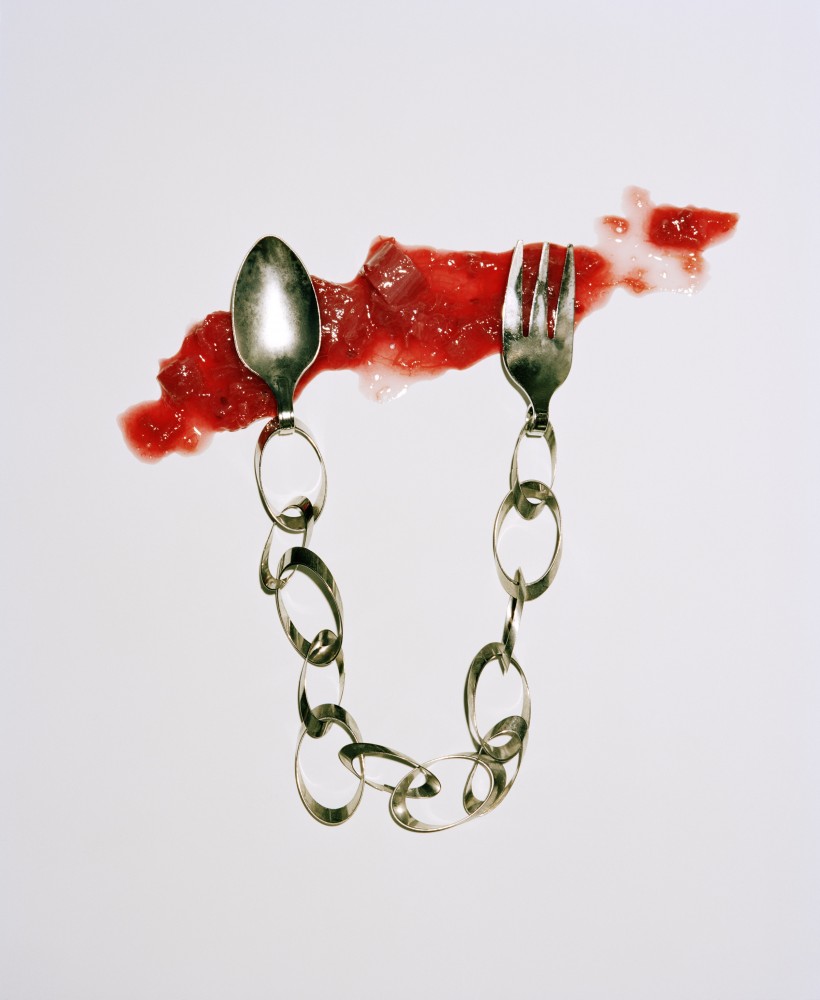
Rhubarbara Kruger Compote: A ruby stained sugar stew in a raspberry liqueur. Courtesy Esther Choi
-

Lucy Orta Torta: a filling of sautéed vegetables and cheese protected by a flimsy, irregular-shaped, pastry. Courtesy Esther Choi
-

Richard Diebeinkorn Bread: an experiment in bread making with different spices, and ratios of water, to achieve “perfection.” Courtesy Esther Choi
Was Le Corbuffet one of the first puns?
I fully took that from Jimmy Lowder. I’m going to give him credit here. At the time we were teaching together at Cooper Union. I said to him, I want to throw an architecture and art food event, and I need a really good name for it. Because Jimmy Lowder is one of the funniest people in the world, he said, “Call it Le Corbuffet.”
So what were these parties like?
I think a lot of people imagine that there were these super fancy, fabulous parties, but they were pretty low key. I think when you’re doing a PhD you’re studying something for eight years plus and you reach a point where — not that it’s ludicrous because history is important — but the status around some of the objects I was writing about just seemed absolutely ridiculous. So I was really attracted to the futility of making dishes based on modern works of art and design, these really famous works. You could eat a László Macaroni-Nagy, and just have a laugh. So the parties were an excuse to make these dishes and test out the recipes.
It’s an interesting tension because you’re taking the piss out of this rarification of canonical works, but to be able to get the joke you have to be saturated in the world that puts them on a pedestal.
It’s been interesting observing how the project's been circulating. Some people interpret it as an excuse to be anti-intellectual: Oh look at these hoity-toity works of art. We can make fun of them. For me that wasn’t really the point. When I talk about futility, it’s more that you can make something and have it be experienced, but it’s ephemeral and there isn’t a market value to it. And also the idea of making art out of the everyday; it’s fun and accessible. I was at the point where I was just so creatively blocked. I had been trying to finish this PhD basically so I could get back to making art. For me the project is about humor, play, and food. And hopefully it asks you to consider what historical narratives you consume and reproduce. And what commodities are a part of these legacies.
Recipes operate in a similar way to artworks. For most people the “original” is never experienced. Most of my students will only see a JPEG of a well-known painting. Or they’ll see an image in a book. It’s like a memory of an original and the words of a historian create an aura around that object. Similarly, who can say that they had the very first beef stroganoff? Do you know what I mean? It's an idea of beef stroganoff that every recipe ends up riffing on. For me there’s an interesting parallel there. And then there’s the notion that by virtue of making the thing, you’re totally unmaking it. Making a salad is not going to produce a canonical artwork. But hopefully through the activity you might start to think about other ways to produce value out of the idea of an artist’s work, so its significance is not just about the circulation of that object within the art market.
-
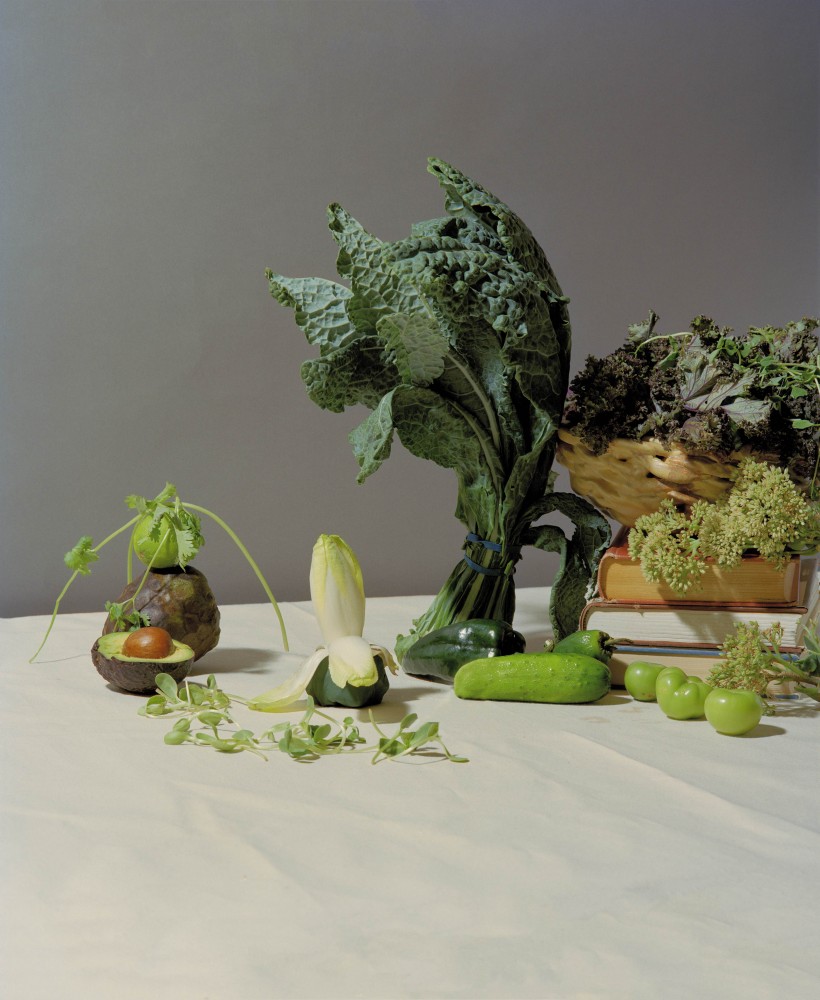
Frida Kale-o Salad: a natural selection of vegetables and spices that overwhelm the senses, with some hidden secrets.
-

Jackson Pollock Pot Pie: Pollock fish in a shellfish stew with aromatic vegetables. Courtesy Esther Choi
-

Lee Krasner Dessert Moon: Sweet fruits in a plum sorbet. Courtesy Esther Choi
-
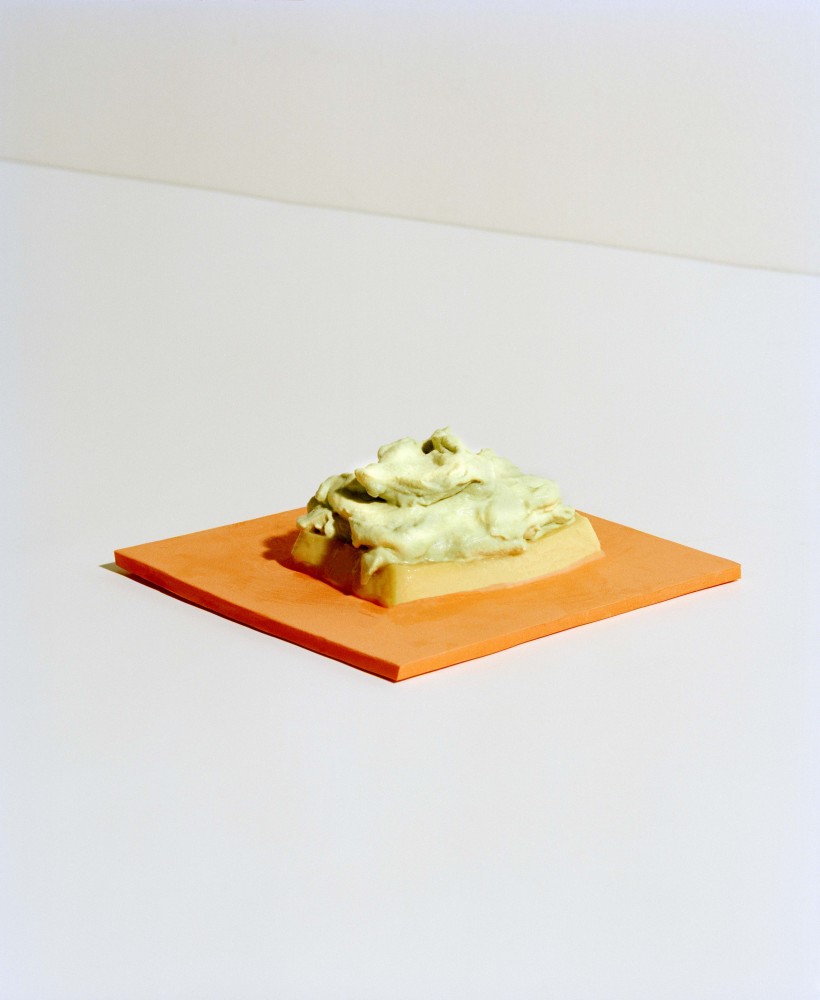
Flan Flavin: a light whipped matcha cream sits on top of a heavy, lime infused flan. Courtesy Esther Choi
Do you feel like you’re referencing an established canon with this book or creating a new one? It’s a mix of art and architecture. There are a lot of feminist artists.
There are definitely people in there that are, I would say, our bread and butter, that represent Art History 101. Even though this book is responding to a canon, inadvertently it's also going to produce one. Instead of just perpetuating something that’s so white male-dominated, I wanted to insert other figures so that canon became disrupted or questioned. But I was working with a major publisher and there was a lot of talk with my editor back and forth about who was a recognizable enough name.
And it has to be able to be a household name for people to get the pun.
The word play added a whole other layer. There are tons of people I wanted to include but I couldn’t think of a good enough pun.
You talk in your intro about food as this index of privilege. I was thinking about how, when the book ends up on these lifestyle blogs, it enters this space where food is increasingly becoming a luxury commodity, adjacent to the Moon Juice woman recounting her $700/day diet.
It’s been an interesting cultural experiment to see how the book has been co-opted. The other day I saw it was mentioned on The Robb Report. On their website, you see articles about a 1920s mansion in Beverly Hills, the newest Tesla, a Rolex, bla bla bla, and then this book. I intended for the book to be the antithesis of that milieu. Art and design have become so privatized: this idea of having a collection of the most elite objects in the world. So I don’t know if this book is weirdly reinforcing the aspirational desire to acquire these art and design objects. I guess the project has proven its point about cultural consumption either way.
The book was also included on celebrity stylist Rachel Zoe’s lifestyle blog in a list of “books that look good on your coffee table.” The visual politics of the book are totally a reaction to the Instagram “lifestyle” imaging of food, which is completely unsustainable and produces so much waste. I was really interested in using the lighting conventions and visual language of editorials to subvert your expectations. In the book, you see pictures of the food with its packaging. We’re living in a saturated image economy now, where all we do is look at pictures all day, every day. But it doesn’t seem as though people are really seeing what’s in the photos, if they’re framing this book as a luxury coffee table book.
-
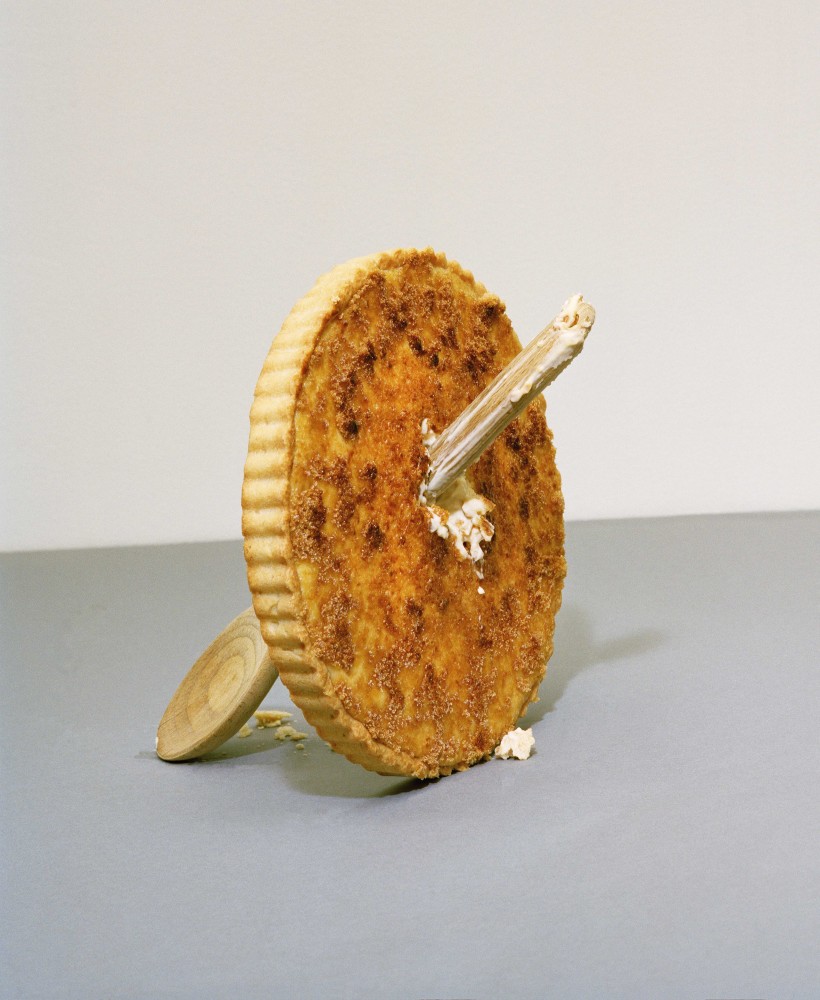
Rem Brûlée: a mixture of citrus tart and crème brûlée experienced through an array of textures. Courtesy Esther Choi
-

Florence Knoll Rolls: malleable buttery rolls infused with herbs. Courtesy Esther Choi
-

Quiche Haring: A buttery dough with hints of a bagel, infused with poppy seeds, sesame, caraway, and onion. Courtesy Esther Choi
The lighting style, the analog film photos, there are all things like that signify value or project value.
Right, to have an image of a Rolex next to an image of food with garbage — this is what is fascinating to me. It’s like, in this moment, we’re past irony and past satire but we haven’t reached a sense of authenticity again. Do you know what I mean? I think that’s what I’m wrestling with. It’s been really interesting to observe how the book’s been taken up culturally now that it’s in the world doing its thing. Because I never would have imagined that half of these audiences would be interested in it. And I’m curious what aspect of it they’re responding to.
Do you have a favorite recipe in the book?
Probably Kimchi Gordon, which is so cliché because I’m Korean. When my whole family ate it, I was terrified. But now, my mom even uses my kimchi recipe! That felt like a win.

